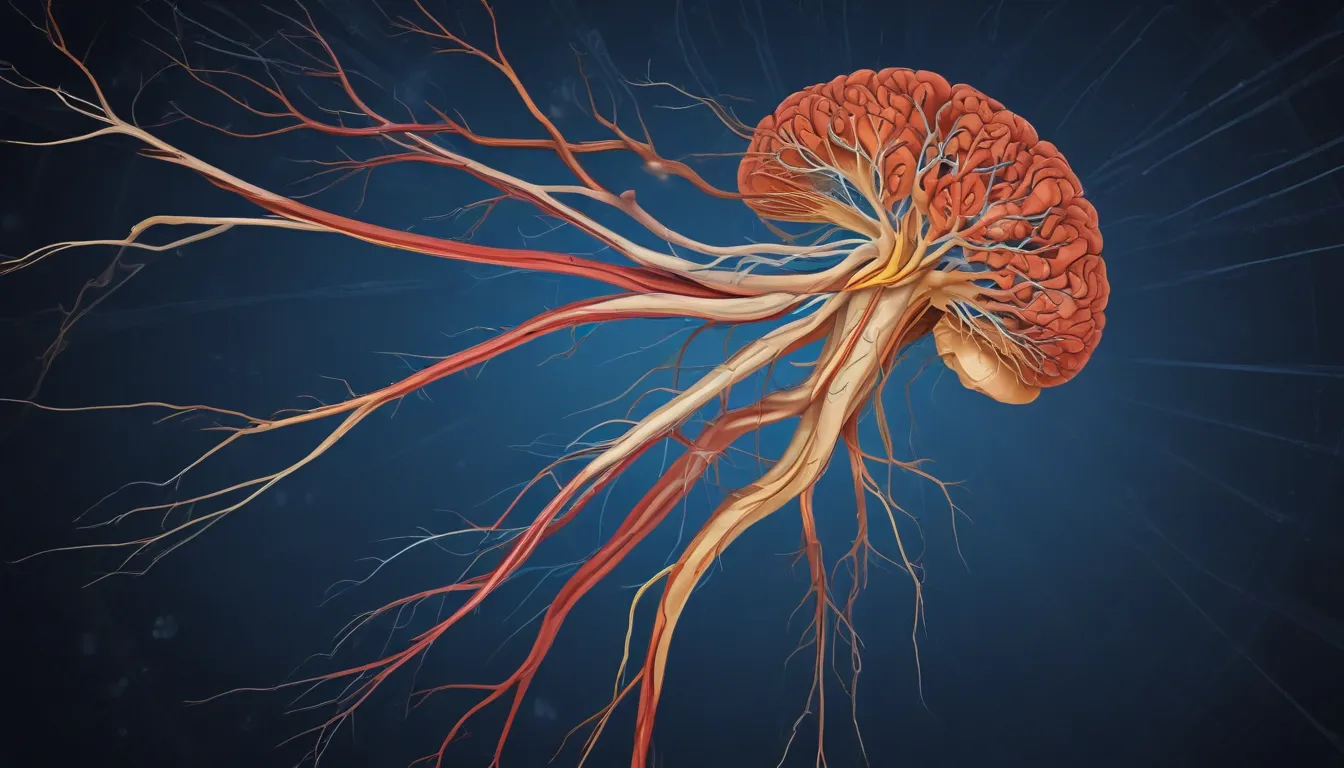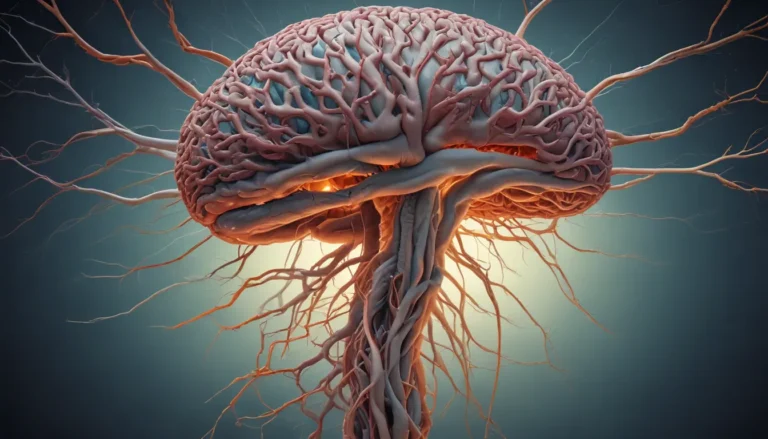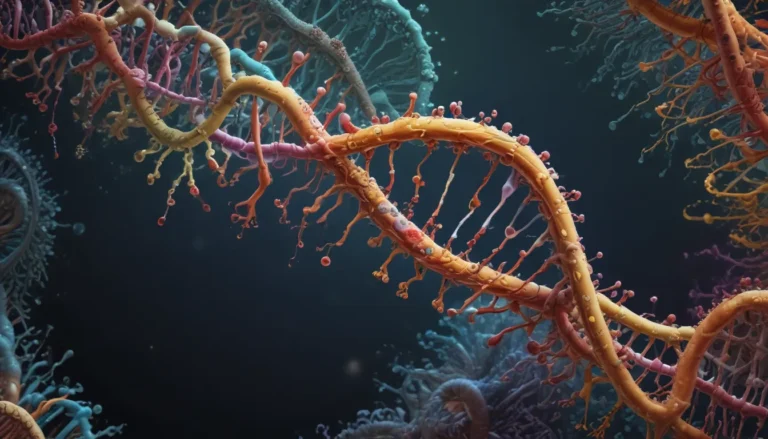A Note About Images: The images used in our articles are for illustration purposes only and may not exactly match the content. They are meant to engage readers, but the text should be relied upon for accurate information.
The peripheral nervous system (PNS) is a captivating and intricate network of nerves that extends throughout the body, connecting the central nervous system (CNS) to various organs, muscles, and tissues. This essential system plays a vital role in transmitting signals from the brain and spinal cord to the rest of the body, allowing for communication and control over bodily functions.
In this article, we will delve into the wonders of the peripheral nervous system and explore 19 mind-blowing facts that will expand your knowledge and leave you in awe of its remarkable capabilities. From its structure and function to its incredible regenerative abilities, we will uncover the hidden marvels of the PNS that often go unnoticed. So, sit back, relax, and prepare to be amazed by these eye-opening facts about the peripheral nervous system!
Key Takeaways:
- The peripheral nervous system controls our sense of touch, muscle movements, and even the pleasure we experience, making it essential for our everyday existence and quality of life.
- With over 100 billion neurons, the PNS connects the brain to the rest of the body, allowing us to see, hear, and respond to our surroundings.
Delving into the Fascinating World of the PNS:
The Two Main Components of the PNS
The peripheral nervous system is divided into the somatic nervous system (SNS) and the autonomic nervous system (ANS). The SNS controls voluntary movements and allows us to perceive sensations consciously. On the other hand, the ANS regulates involuntary processes like heart rate, digestion, and breathing.
The Abundance of Neurons in the PNS
In the peripheral nervous system alone, there are over 100 billion neurons, each with the unique capability to transmit electrical signals throughout the body. This vast network enables us to interact with the world around us.
Function of the PNS in Transmitting Pain Signals
When we experience pain, the peripheral nervous system carries signals from the site of injury or damage to the brain, alerting us to potential harm. This crucial function helps us protect ourselves and seek appropriate medical attention.
Controlling Our Sense of Touch and Taste
The PNS is responsible for relaying tactile information to the brain, allowing us to perceive touch sensations and enjoy textures. Moreover, the cranial nerves in the PNS play a vital role in our ability to smell and taste, enriching our sensory experiences.
Coordination of Muscle Movements and Balancing
From simple actions like blinking to intricate movements like dancing, the peripheral nervous system regulates and coordinates all our muscle movements. Additionally, it collaborates with the brain to help us maintain balance, coordination, and stability in various activities.
Role in Regulation of Body Temperature and Digestion
The PNS works alongside the autonomic nervous system to regulate body temperature by triggering responses like shivering to generate heat or sweating to cool down the body. Moreover, it influences digestion by controlling the movement of food through the digestive tract and the secretion of digestive enzymes.
Involvement in Various Bodily Functions
The peripheral nervous system plays a crucial role in facilitating the release of hormones like adrenaline in response to stress or danger. It also aids in transmitting visual and auditory signals to the brain for interpretation, allowing us to see, hear, and respond to our environment effectively.
Remarkable Regenerative Abilities
Unlike the central nervous system, the PNS has the remarkable ability to repair and regenerate damaged nerves to some extent, enabling functional recovery after injuries. This regrowth process, though slow, contributes to the body’s healing and recovery mechanisms.
Impact on Emotional and Sensory Experiences
The peripheral nervous system is involved in transmitting sensations of pleasure, such as gentle touches or enjoyable tastes, enriching our emotional and sensory experiences. It also plays a role in sexual arousal and the physiological responses that accompany it.
Vulnerability to Autoimmune Disorders
Certain autoimmune disorders, like Guillain-Barré syndrome, can target the peripheral nervous system, leading to weakness, numbness, or tingling in the extremities. Awareness of these conditions is essential for early diagnosis and intervention.
Appreciating the Vital Role of the PNS in Daily Life:
The peripheral nervous system serves as the communication network between the brain and the rest of the body, enabling the exchange of information and coordination of various bodily functions. Its constant reception of sensory input from the environment contributes to our ability to perceive and interact with the world around us.
Without the peripheral nervous system, we would not be able to experience the joys of touch, movement, taste, and sight that make life fulfilling and meaningful. Its intricate functions and capabilities are essential for our survival and quality of life, highlighting the remarkable nature of this incredible system.
Conclusion:
In conclusion, the peripheral nervous system is a remarkable component of the human body that facilitates communication between the central nervous system and the body’s various parts. The 19 mind-blowing facts explored in this article shed light on the complexity and incredible capabilities of the PNS, emphasizing its indispensable role in our daily lives.
Understanding the functions and properties of the PNS can deepen our appreciation for the intricate workings of the human body and the wonders of biology. By exploring these fascinating facts, we gain insights into how our bodies respond to stimuli and the amazing ways they are wired to function.
As we marvel at the peripheral nervous system’s complexities, let us remember to express gratitude for its contributions to our everyday experiences and well-being. This awe-inspiring system exemplifies the marvels of biology and serves as a reminder of the incredible capabilities that exist within us.
FAQs:
- What is the peripheral nervous system?
-
The peripheral nervous system connects the central nervous system to the rest of the body, consisting of all nerves and ganglia outside of the brain and spinal cord.
-
How does the peripheral nervous system function?
-
The PNS transmits signals between the central nervous system and different body parts, relaying sensory information to the brain and enabling motor responses to be sent from the brain to muscles and organs.
-
What are the main components of the peripheral nervous system?
-
The main components include sensory neurons, motor neurons, and the autonomic nervous system, each playing a vital role in regulating bodily functions.
-
How many pairs of cranial nerves are in the peripheral nervous system?
-
There are 12 pairs of cranial nerves in the PNS responsible for controlling sensory and motor functions in the head, face, and neck.
-
Can peripheral nerves regenerate if damaged?
- Peripheral nerves have the capacity to regenerate to some extent after injury, contributing to functional recovery over time.
Stay Curious and Explore:
The peripheral nervous system’s intricate complexity enables us to experience life’s wonders and challenges. From regulating sensations to coordinating movements, this remarkable network is integral to our daily existence. Understanding the PNS empowers us to appreciate the extraordinary capabilities of our bodies and the mysteries they hold. If you found these facts captivating, continue your exploration of the nervous system’s marvels by learning about the equally impressive feats of the central nervous system. Keep your curiosity alive and never cease to marvel at the extraordinary machine that is you.
Feedback:
Our dedication to delivering trustworthy and engaging content drives us to maintain the highest standards of accuracy and credibility. Each fact on our platform is contributed by real users like you, bringing diverse insights and reliable information to our readers. Trust in our commitment to quality and authenticity as you navigate and learn with us.






